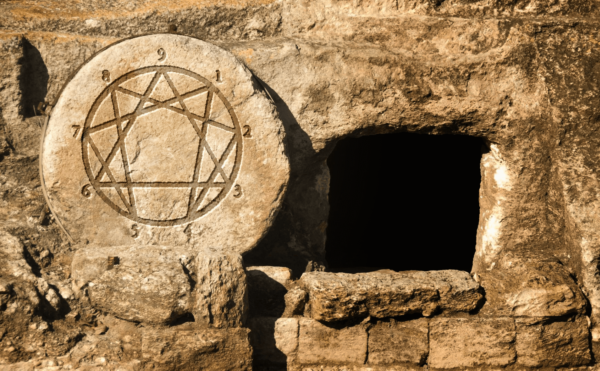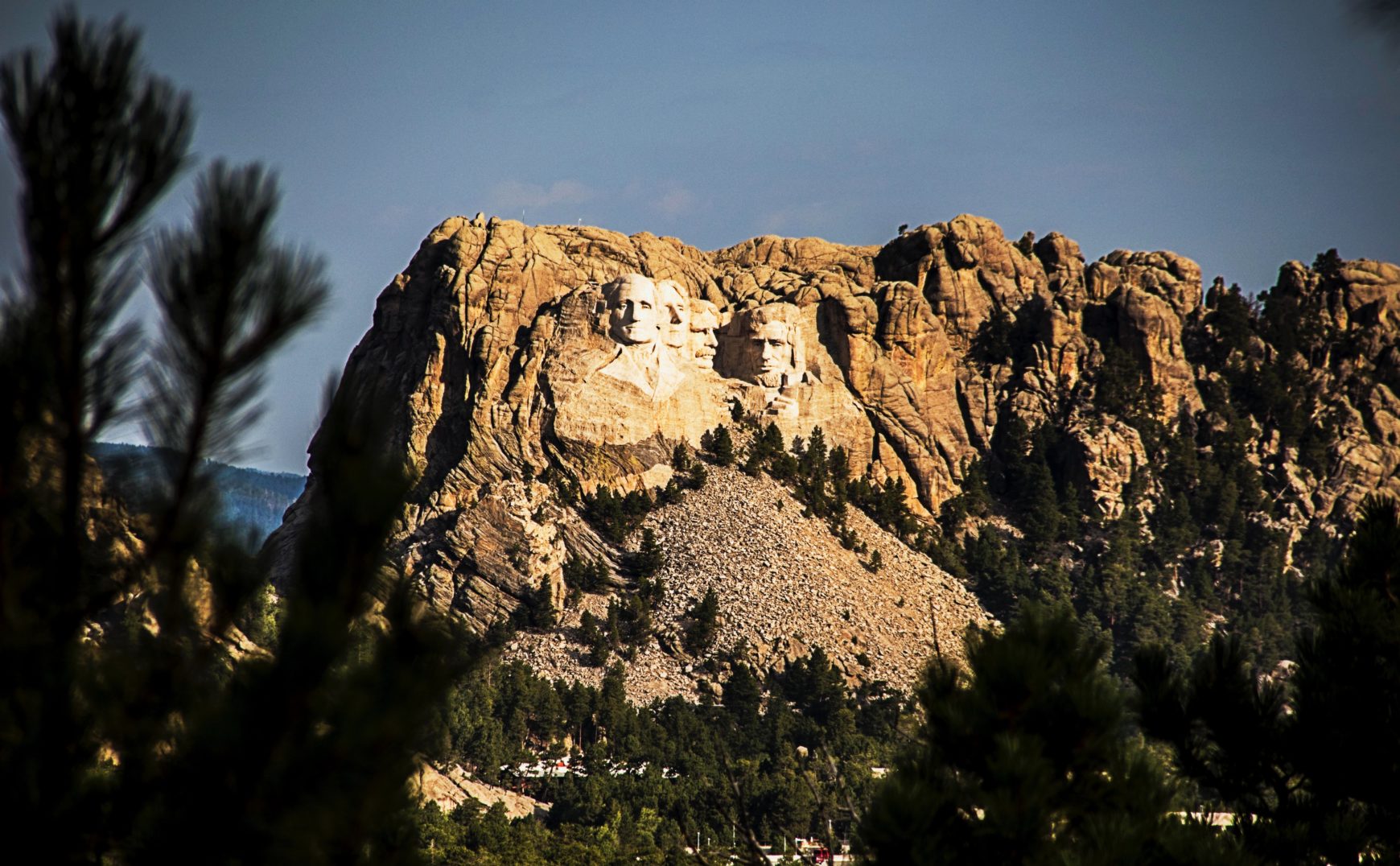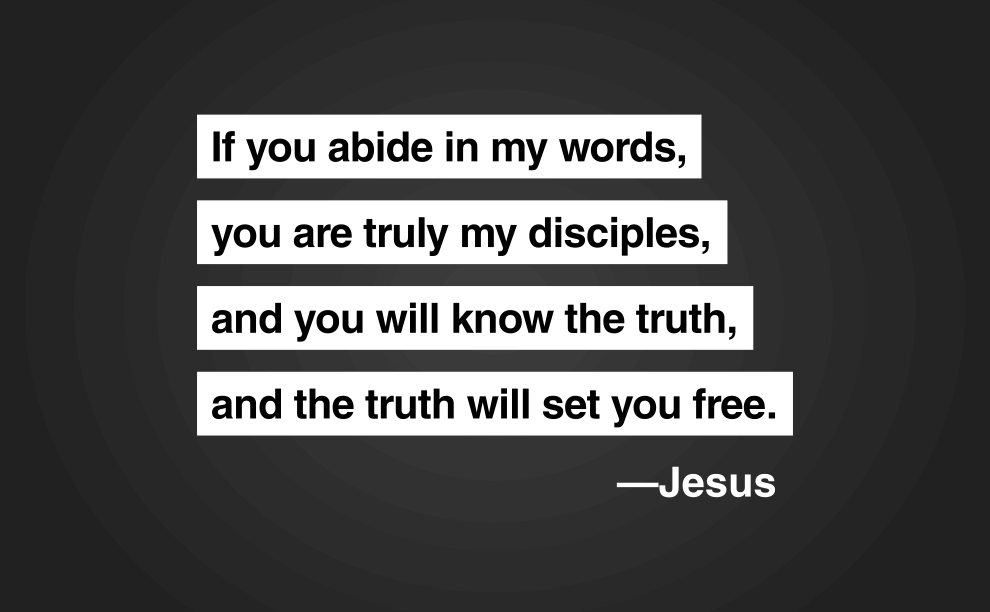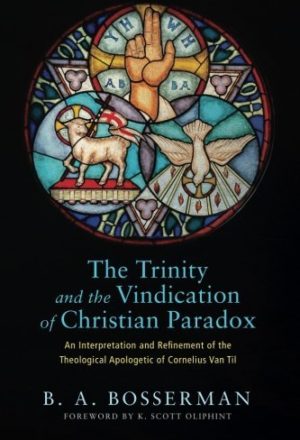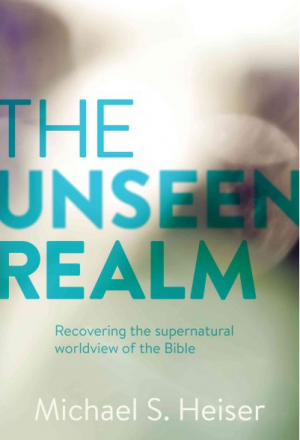For modern Christians, discussions of the afterlife fit into neat categories around Heaven and Hell. This way of thinking is ingrained in our imaginations from Sunday school teachers and popular culture. But looking for such clear distinctions in the Bible isn’t always so easy.
The biblical picture of the afterlife is much more nuanced than I ever learned in Sunday school. On the one hand, passages like Matthew 25:31-34 make it clear that Jesus will judge the world and divide the sheep from the goats. To the sheep, He will say, “Come, you blessed of My Father, inherit the kingdom prepared for you from the foundation of the world.” But to the goats, He will say “Depart from Me, you cursed into the everlasting fire prepared for the devil and his angels.”
But other passages are less clear. In 1 Samuel 28, where is Samuel after his death? Is he in heaven or some darker place under the earth? How does the witch of En Dor call him up?
Or what about Luke 23:42-43? What paradise is Jesus talking about? And how do we reconcile that with 1 Peter 3:19-20, where Jesus preaches to the Spirits in prison?
In this series, I want to look at our conceptions of Heaven, Hell, and the afterlife from a biblical perspective. In this post we’ll look at the summoning of Samuel’s shade by the Witch of En Dor. And next time, the death of Jesus and his statement to the thief on the cross that they will be together in Paradise.
The Decline of Saul
The story of Saul’s consultation with the Witch of En Dor is easily one of the most paranormal events in the Old Testament. The story is told in the 28th chapter of 1 Samuel and is the final event recounted in the life of Saul before his death and the end of his dynasty at the hand of the Philistines.
For years leading up to this fateful day, Saul’s life – both spiritually and politically – had been in decline. Yahweh, through His prophet Samuel, had rejected Saul as king, saying:
“Has Yahweh as great delight in burnt offerings and sacrifices,
as in obeying the voice of Yahweh?
Behold, to obey is better than sacrifice,
and to heed than the fat of rams.
For rebellion is as the sin of witchcraft,
and stubbornness is as iniquity and idolatry.
Because you have rejected the word of Yahweh,
He also has rejected you from being king.” (1 Samuel 15:22-23)
Yahweh’s rejection of Saul came after he failed to utterly destroy the Amalekites as he was commanded – and resulted in a separation between Saul and Samuel. Note the foreshadowing of Saul’s final failure at En Dor when his rebellion here is compared to the sin of witchcraft.
Saul’s decline continued as David grew in popularity until even the priests at Nob take his side in chapter 21. Saul, rather than repenting, orders a massacre of the priests at the hand of a Gentile – Doeg the Edomite. What Saul refused to do to King Agag and the Amalekites, he had no problem doing to the priests along with their wives, children, and animals.
By this point, Yahweh had abandoned Saul and his wicked rule of Israel. Things were rapidly declining. The Philistines gathered together in Shunem to make war against Israel and there was little hope for a victory. In this time of trouble, Saul tries to return to the Lord, but it is too late. In 1 Samuel 28:6 we read, “When Saul inquired of Yahweh, Yahweh did not answer him, either by dreams or by Urim or by the prophets.”
A Desperate King and a Famous Medium
Saul was desperate. Samuel was dead (1 Sam. 25:1), David appeared to be allied with Achish the King of Gath (1 Sam. 27:2-4), the Philistines were gathering for war (1 Sam. 28:4-5), and Yahweh was silent (1 Sam. 28:6).
For Saul, desperate times called for desperate measures. He asked his servants to find him a medium that can shed some light on his situation. Despite the prohibitions on necromancy (among others, see Lev. 19:31, Lev. 20:6, Lev. 20:27), Saul’s servants had no trouble locating a medium.
We know her as the Witch of En Dor or the Medium of En Dor. In Hebrew, she is a Baalat-ob – typically translated as a mistress controlling a ghost or demon. More on the significance of her name later.
Saul came to the Witch of En Dor in disguise and under the cover of darkness. Once there, he had the woman call up Samuel so that he could inquire of his dead spiritual guide. Only the woman could see Samuel’s form, but he spoke to Saul asking, “Why have you disturbed me by bringing me up?”
Saul answered, “I am deeply distressed; for the Philistines make war against me, and God has departed from me and does not answer me anymore…Therefore I have called you, that you may reveal to me what I should do.”
Samuel was displeased and answered Saul, “So why do you ask me, seeing Yahweh has departed from you and has become your enemy? And Yahweh has done for Himself as he spoke by me. For Yahweh has torn the kingdom out of your hand and given it to your neighbor, David…Moreover Yahweh will also deliver Israel with you into the hand of the Philistines. And tomorrow you and your sons will be with me.”
Up From the Earth
We are told very little about the identity of the Witch of En Dor. But we know she was a practitioner of necromancy – providing communion between the world of the living and the world of the dead.
There are widely varying opinions about the efficacy of the witch’s typical practice – from a total fraud to a true practitioner of magic. I won’t get into a defense of the existence of magic in this article, but consider Exodus 7:11-12, Deuteronomy 18:9-11, Acts 19:19, and Revelation 21:8 as a good place to start exploring the idea. The author says she called up Samuel, and I see no reason to doubt the plain reading of the text.
What is most interesting for our purposes are the many directional designations in the text:
- “Whom shall I bring up for you” (28:11)
- “Bring up Samuel for me.” (28:11)
- “I saw a spirit ascending out of the earth.” (28:13)
- “An old man is coming up, and he is covered with a mantle.” (28:14)
- “Why have you disturbed me by bringing me up?” (28:15)
All three of the characters in this story acknowledge the direction of Samuel’s movement – up from the earth. The deceased Samuel’s place is under the earth until he is disturbed by the witch. The righteous prophet Samuel existing, post-death, under the earth is not what a simplistic view of the afterlife would expect.
Which brings us to the witch herself – the Baalat Ob. Baalat is the feminine version of baal (master/husband) so it is often translated as mistress/wife. Ob is harder to nail down, but the most common translation is ‘familiar spirit.’ This is how we get the traditional translation of the Witch of En Dor as the mistress of a ghost. (405)1
However, some argue that ob is related to the extra-biblical, Semitic word ab which refers to a ritual hole in the ground where departed souls would ascend into the world of the living. With this understanding, the witch is the ‘Mistress of the Pit.'(4)2 Perhaps a better translation, given the repeated use of up/ascend in the narrative. Whatever translation we settle on, the witch calls up Samuel from under the earth.
Trending
Heaven, Hell, & Sheol
Many conservative commentators argue that the Witch of En Dor could not have summoned Samuel because he was in heaven and she had no authority there. But the text makes it clear that Samuel does not come down from the heavens but that he ascends up out of the earth. Our simplistic conceptions of Heaven and Hell needs to be jettisoned before we can take this passage seriously.
Samuel was not in heaven. No man was in heaven . The defiling curse of sin consigned all men to separation from the holy God – even a righteous man like Samuel.
As an orthodox Christian, I firmly believe that the atoning work of Jesus was applied retroactively to old covenant saints. But that work was not applied until Jesus sat down at the right hand of the Father. As Hebrews 11:39-40 tells us, “And all these [faithful old covenant saints], having obtained a good testimony through faith, did not receive the promise, God having provided something better for us; that they should not be made perfect apart from us.”
Instead of going to heaven, the old covenant saints went to Sheol to await the coming of the Messiah and the perfection of their faith.
The Afterlife in the Ancient Near East
The Hebrews were not the only people to have a view of the afterlife in the ancient Near East. While their worship of Yahweh certainly made them unique among the nations, there are some parallels we can see by briefly comparing the views of contemporary cultures. If these ancient pagan cultures truly served rebellious heavenly beings, there are elements of truth mixed in with their rites and customs, albeit buried under layers of lies and deceptions.
In Babylon and other Mesopotamian cultures, the dead were consigned to the land of no return. As we read in the myth of the descent of Ishtar to the Underworld:
“To Kurnugi, land of no return,
Ishtar daughter of Sin was determined to go...
to the house which those who enter cannot leave,
on the road where travelling is one-way only,
to the house where those who enter are deprived of light,
where dust is their food, clay their bread.” (119)3
Despite the occasional escape, all the dead were cast into the Underworld together. There live “the lord and priest, live the wizard and the prophets.” (24)4 While the myth of Ishtar's descent certainly presents a bleak picture of the afterlife, Mesopotamian funerary rites point to a more nuanced view. The regular inclusion of grave goods (especially tools, weapons, and food) point to some continuing human endeavor after death. (7)5
I don't want to make too much of these myths, but it is worth noting two things. First, all the dead went to the same place. Second, there continued to be some level of conscious activity beyond death. We see both of these appear in the Old Testament's presentation of Sheol.
Sheol in the Old Testament
There are sixty-four references to Sheol in the Old Testament, with varying translations depending on the context. The KJV translates Sheol as grave 31 times, hell 30 times, and pit three times. (145)6 But there are problems with those translations – they get at elements of Sheol, but none capture the full meaning.
I'll save you the pain of going through all sixty-four reference to Sheol in the Old Testament, but a few are worth mentioning briefly:
- Isaiah 14:9 contains a prophecy concerning the king of Babylon, saying: “Sheol from beneath is excited about you, to meet you at your coming; it stirs up the dead for you, all the chief ones of the earth; it has raised up from their thrones all the kings of the nations.” This calls to mind more than a simple grave. There continues to be a hierarchical structure in Sheol and the residents there are capable of being stirred and rising to meet the king of Babylon.
- In 1 Samuel 2:6, Hannah prays a song of rejoicing over her son, Samuel. In that prayer, she says, “Yahweh kills and makes alive; He brings down to Sheol and brings up.” Hannah knows that Yahweh gives and takes life, but she also looks forward to the day when the righteous dead will be lifted up from Sheol. If Sheol is strictly a place of punishment (Hell), who will be raised up by Yahweh?
- The great messianic Psalm 16 also has a reference to Sheol. In verses 10 -11 of the Psalm, David writes, “For You will not leave my soul in Sheol, nor will You allow Your Holy One to see corruption. You will show me the path of life; in your presence is fullness of joy; at Your right hand are pleasures forevermore.” Even the coming Messiah will descend into Sheol, but his soul will not be left there – instead he will walk the path of life and return from the underworld. We'll get into more detail on that in the next installment.
Looking at Sheol in the Old Testament, both the righteous and the unrighteous descend to Sheol after death. That can strike us as odd, but for the ancient mind, eternal reward seems to take a backseat to fidelity to the true God.
Serving Yahweh is the right thing to do – regardless of the eternal consequences. But, as we see foreshadowed in the Song of Hannah (1 Samuel 2:6), there is hope that God will not leave the faithful in Sheol; He will show them the path of life and empty the grave of the righteous.
Looking Forward
Fortunately, the story doesn't end here. The faithful Old Covenant saints were not abandoned in the grave. What's more, the righteous and unrighteous weren't indiscriminately thrown into Sheol together. In the next installment, I will look at the divisions within Sheol, what we can learn from the Greek concept of Hades, and how the death of Jesus changes everything for new covenant believers.
References:
- Unger, Merril. Unger's Commentary of the Old Testament. Moody: Chicago, 1981
- Gulan, Gary M. “The Witch of Endor and Saul.” Beyond the Pulpit, www.beyondthepulpit.org/articles/bible-book-of-1-samual/471-1-samuel-7-7-24-the-witch-at-endor. Accessed 12 August 2018
- Dalley, Stephanie, ed. Myths from Mesopotamia. Oxford University Press: Oxford, 1989
- Graves, Robert, et al. The Larousse Encyclopedia of Mythology. Prometheus Press: New York, 1960.
- Barrett, Caitlin E. “Was Dust Their Food and Clay Their Bread? Grave Goods, the Mesopotamian Afterlife, and the Liminal Role of Inana/Ishtar.” Journal of Ancient Near Eastern Religions, vol. 7, no. 1, Sept. 2007.
- Bar, Shaul. "Grave Matters: Sheol in the Hebrew Bible." Jewish Bible Quarterly, vol. 43, no. 3, Jul/Sep 2015.








